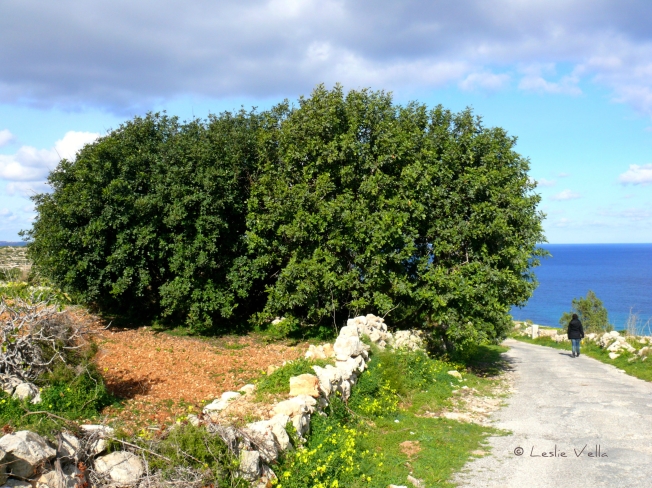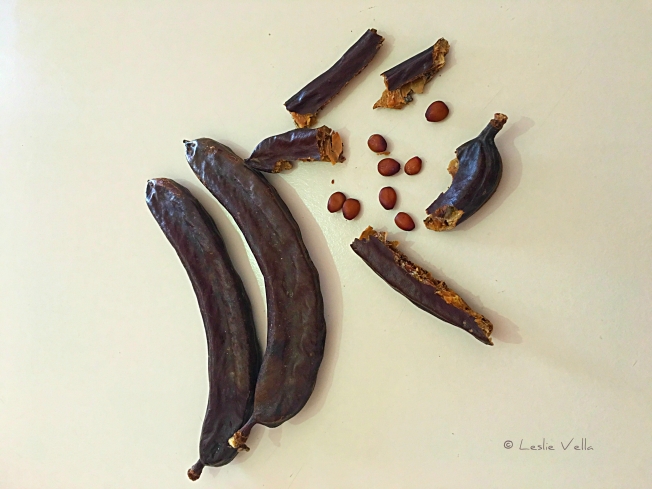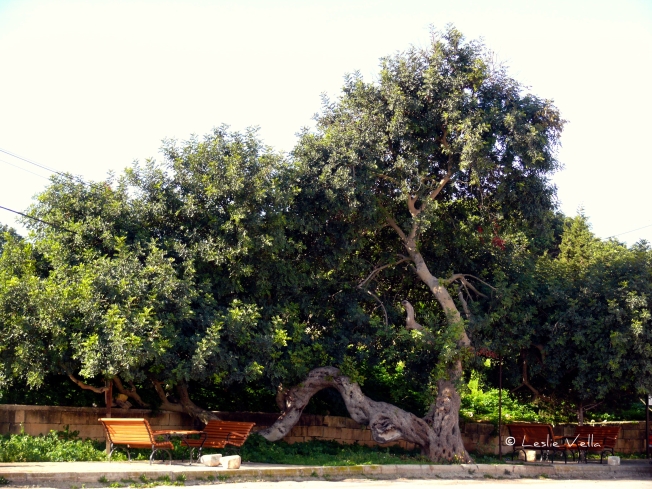
Walking in the Mellieha countryside this weekend, in the traffic-free and solitary whereabouts of Ghajn Tuta, I came across an ancient carob tree laden with ripe pods. The carob, known to science as Ceratonia siliqua and as harrub to the Maltese is a hardy evergreen tree which graces the Maltese landscape and retains a canopy of green in the otherwise parched and dry summer Mediterranean landscape.
The carob is an evergreen flowering shrub, belonging to the pea family. It is native to the Mediterranean region especially in the eastern and southern area of this great Sea and is a very common species here in Malta where it grows without much care or cultivation and is legally protected, although countless ancient carobs unfortunately continue to be regularly uprooted to make way for development.
The carob’s fruit, its pod, has been consumed since ancient times by the peoples of the Mediterranean. The Bible makes numerous references to it such as in the parable of the Prodigal Son where the man who squandered all his riches and ended up working as a swineherd, “longed to fill his stomach with the pods that the pigs were eating, but no one gave him anything”.
On the basis of another biblical reference, it is also known as Saint John’s Bread or locust bean given that when Jesus’ cousin John the Baptist was fasting in the desert, “the same John had his raiment of camel’s hair, and a leathern girdle about his loins; and his meat was locusts and wild honey.” The locusts referred to in the biblical passage are not of the grasshopper variety but carob pods!
In Malta the ripe carob fruit is used to produce a syrup called “Gulepp tal-Harrub” which is used to treat chest colds and coughs and also forms the basis of the “karamelli tal-harrub” sweets which are popular for consumption during Lent when it is forbidden to consume sugary sweets. In times of scarcity, the carob pod was ground into a flour to produce bread. During the siege of Malta in World War 2, carob pods became highly prized for their nutritional value and fetched the highest-ever recorded market price of a penny a pod!

I prefer to eat my carob pods straight from nature. Detached from the tree, rinsed under clean, running water and chewed one small mouthful at a time. Beware of the very hard seeds inside the pod which can easily break a tooth! Eat them in the countryside and spit the seeds onto the soil to help propagate new trees or savour them at home. An unrefined, woody sweet flavour which leaves a delectable aftertaste in one’s mouth!
But does one simply eat carobs for fun? There are many ascribed nutrition and health benefits which can be summarised as follows:
Carob tannins contain Gallic acid that works as an analgesic, anti-allergic, antibacterial, antioxidant, antiviral and antiseptic. It improves digestion and lowers cholesterol level in the blood and is used for treating bowel disorders in children and adults alike. Since it does not contain caffeine, carob is beneficial for people with high blood pressure.
The vitamin E content in carob helps in treating cough, flu and anaemia while the Gallic acid helps in preventing and treating polio in children. Carob fights against osteoporosis due to its richness in phosphorus and calcium. Carob pod husks are chewed by singers to clear the voice and throat.
And the seeds? Small and hard there is not much of a culinary use and unless you wish to plant them in a pot to grow little carob trees, just throw them away into the countryside where they may either take root or serve as food for the birds. But have one final look at them and hold one in your hands. For the humble carob seed you are holding was used by the ancients as a unit of measure for weighing gold and precious stones. The carob’s scientific name Ceratonia siliqua originates from the Greek name for carob seeds: keration. The word carat used in this sense is a corruption of this Greek word!
